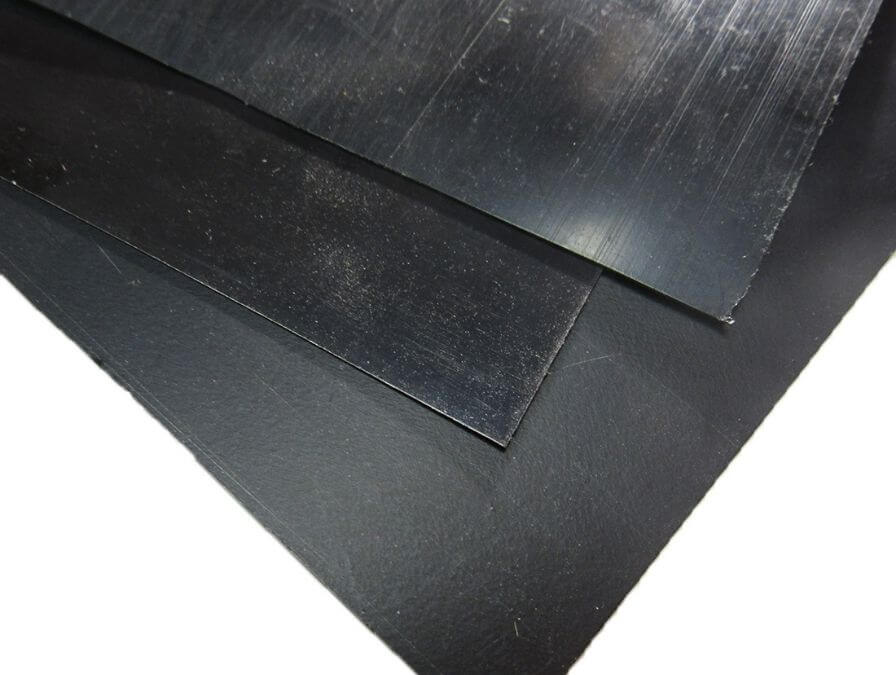The significance of geomembrane anti-seepage
The anti-seepage effect of geomembrane is of great significance in civil engineering. The following are several aspects to explain the significance of geomembrane anti-seepage:
Soil anti-seepage: Geomembrane can effectively prevent water and other liquids from penetrating into the soil. This is important in applications where soil moisture needs to be maintained, water levels controlled, soil erosion avoided and crops protected.
Water conservancy projects: Geomembranes are widely used in water conservancy projects, such as reservoirs, canals and river embankments. By forming an anti-seepage isolation layer between water and soil, geomembranes can effectively reduce water leakage and maintain water stability and water supply security.
Landfills: Geomembranes play a key role in the anti-seepage layer of landfills. It can prevent waste leakage, prevent toxic substances in waste from contaminating groundwater and soil, and protect the environment and public health.
Earthworks: In earthworks, geomembranes can be used for soil erosion prevention, roadbed anti-seepage, and slope stabilization. It can effectively prevent water from penetrating into the soil and maintain soil stability, impermeability and corrosion resistance.
Construction Engineering: In construction engineering, geomembranes are often used for basement waterproofing and foundation drainage systems. It prevents groundwater leakage and protects the stability and durability of building structures.
To sum up, the anti-seepage effect of geomembrane is of great significance in protecting the environment, maintaining project stability and sustainable development. By using appropriate geomembrane materials and correct installation methods, effective anti-seepage effects can be achieved, the risk of environmental pollution can be reduced, and the reliability and sustainability of the project can be improved.
Can geomembrane be used on roofs?
Yes, geomembranes can be used in roof waterproofing systems. In construction projects, geomembranes are widely used in the construction of roof waterproofing layers to provide waterproof protection and anti-seepage functions.
Roof waterproofing systems usually consist of multiple layers, one of which is a waterproof layer that effectively prevents rainwater and other liquids from penetrating into the interior of the building. As a common choice for waterproofing layers, geomembranes have the following advantages:
Waterproof performance: Geomembrane has excellent waterproof performance and can effectively prevent moisture from penetrating into the interior of the building. It creates a sealed barrier that prevents rainwater from seeping through and causing roof leaks.
Durability: Geomembranes are typically made from materials that are highly weather- and chemical-resistant and can withstand performance requirements from long-term exposure to a variety of environmental conditions. They have a long service life and provide long-term stable waterproof protection.
Flexibility: Geomembrane has good flexibility and adaptability, and can adapt to the deformation and changes of the roof during construction and use. This allows them to cope with expansion and contraction of the roof due to factors such as temperature changes, structural deformation or earthquakes.
Ease of installation: Geomembrane is lightweight and easy to carry and install, and is suitable for various roof structures and complex terrain conditions. They can be fixed to the roof surface by welding, bonding or fixing to form a continuous closed waterproof layer.
When selecting a geomembrane as a roof waterproofing material, be sure to select the appropriate type and specification of geomembrane to meet specific project requirements and environmental conditions. In addition, correct installation methods and construction specifications need to be followed according to the building design and local building regulations to ensure the reliability and durability of the waterproofing layer.

What types of geomembrane surfaces are there?
Smooth surface: Smooth surface is one of the most common geomembrane surface types. This surface is smooth and flat, which reduces the erosion and wear of the geomembrane by water flow or other liquids by reducing roughness and friction. Smooth surface geomembranes are usually used in applications that require certain slip resistance, easy cleaning and liquid retention properties, such as pond lining, pool anti-seepage, etc.
High-Density Surface (HDPE): The surface of a high-density polyethylene (HDPE) geomembrane is a texture with tiny ridges. This surface texture can increase the friction between the geomembrane and other materials and improve the anti-slip performance of the geomembrane. High-density surfaces are often used in projects that require higher bonding strength, soil erosion resistance and greater frictional resistance, such as river protection, soil slope protection, etc.
Parquet Surface: A parquet surface is a textured design that has a toothed or uneven texture, similar to the shape of puzzle pieces. This surface can provide better anti-skid and anti-slip properties, helping to maintain stability between the geomembrane and other structural layers. Geomembranes with parquet surfaces are often used in slope projects, vertical walls, etc. that require high slip resistance and soil anchoring capabilities.
Perforated Surface: Perforated Surface is a treatment that creates tiny holes in the surface of the geomembrane. These holes can enhance the connectivity between the geomembrane and the soil, promote water and gas permeability, and help drainage and ventilation. Geomembranes with perforated surfaces are commonly used in applications such as underground drainage systems, soil humidification, and gas infiltration.

